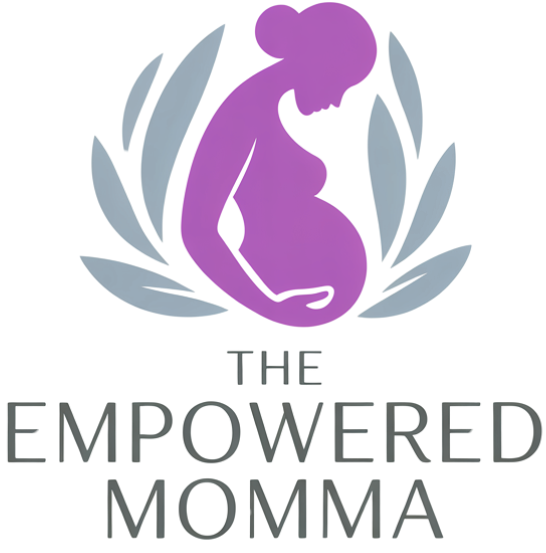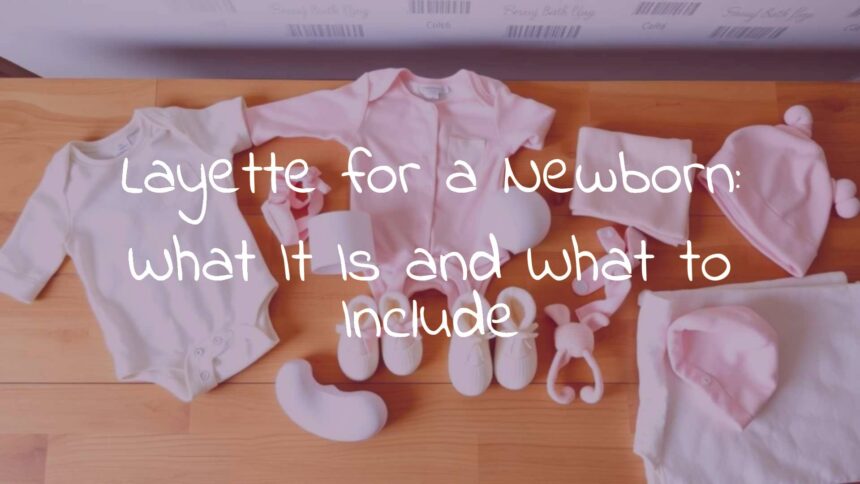The term “layette for a newborn” can sound fancy, but it simply means the first set of clothes, accessories, and must-have basics put together for a baby before they arrive. Think of it as the baby’s first wardrobe-a bundle of items you’ll need from the moment your newborn comes home.

Years ago, layettes were often hand-knitted, with simple pieces like blankets, hats, and booties. Today, layettes can include a wide variety of clothing and care items, often available in ready-to-buy sets. The main idea is to have what you need for your baby’s first weeks-so you can spend less time running to the store and more time with your newborn.
What Is a Layette for a Newborn?
A layette is simply a starter collection of baby clothes and basic care items needed right after birth. The word “layette” comes from French and originally meant a small box or trunk-perfect for packing up tiny baby things. The exact items in a layette differ between families, but the main aim is always the same: to provide what the baby needs for comfort and daily care.
Modern layettes often include more than clothes. They usually cover basic hygiene, sleep, and feeding needs-helping parents look after their baby with less worry. Getting a layette is a joyful part of preparing for a new addition to the family.
Why Do You Need a Layette?
The main reason for buying or putting together a layette is to make sure parents have everything ready for their baby’s arrival. Being prepared with these basics helps make the early days at home less stressful, so you can focus on your baby and each other.
A well-prepared layette also helps keep your newborn comfortable and safe. It usually includes soft, gentle fabrics in the right sizes for newborns-and having everything close at hand makes it easier to manage outfit changes, feedings, and naps.

What Should Be in a Newborn’s Layette?
With all the options out there, knowing what goes in a newborn’s layette can feel overwhelming. Breaking items down into groups can help. Most layettes have clothes, sleepwear, bath and hygiene items, and diapering basics. How many of each you need depends on how often you want to do laundry, but the idea is to start with a strong set of essentials.
This list covers the basics. You can buy pre-made sets from stores, but building your own means you can pick what suits your family and local weather best. Focus on practical, comfy, and high-quality pieces, since babies grow quickly!
| Category | Recommended Items |
|---|---|
| Bodysuits/Onesies | 4-8 (short-sleeved and/or long-sleeved) |
| Pants/Leggings | 2-3 pairs |
| Pajamas/Sleepers | 4-8 |
| Rompers | 1-3 |
| Hats/Beanies | 1-3 |
| Socks/Booties | 4-7 pairs |
| Outer Layers | Weather-appropriate: soft cardigan, bunting, or lighter blanket |
| Accessories | Mittens, receiving blanket, headband (optional) |
| Sleep Essentials | Swaddle blankets, sleep sack, crib sheets (2-3) |
| Bath & Hygiene | Hooded towel, soft washcloths, baby wash/lotion |
| Diapering | Diapers, wipes, diaper cream, portable changing mat |

Clothing Basics for a Newborn
Bodysuits and Onesies
Bodysuits-also known as onesies-are used daily for newborns. They can be worn alone on warm days or under other clothes when it’s cold. Snap closures along the bottom make diaper changes quick and easy. For the first weeks, bodysuits with side snaps or envelope necks are helpful. These allow you to undress your baby without pulling clothes over their head.
Pants and Leggings
Pants or leggings made from soft, stretchy fabric are comfortable and make a great combo with bodysuits. Some come with attached feet, keeping toes warm without socks. Pick a few neutral pairs-they go with everything and are quick to change.
Pajamas and Sleepers
Pajamas or sleepers with long sleeves and footies help your baby stay warm overnight. Look for ones with zippers (especially two-way zippers) for easy nighttime diaper changes. Pajamas with fold-over hand covers can keep your baby from scratching themselves while sleeping.
Rompers
Rompers or all-in-one outfits are cute and practical for outings, tummy time, or photos. Choose those with snaps at the crotch for easy diaper changes. They are easy to layer over bodysuits in cooler weather.
Hats and Headwear
Babies can lose heat from their heads, so hats or beanies are useful, especially in cooler months or if your baby is born during colder weather. Hats help regulate body temperature-just don’t use hats when your baby is sleeping alone.
Socks and Booties
Most newborns need socks or booties to keep their feet warm, both at home and outside. It’s helpful to have several of the same color, so you can replace lost ones easily. Pants with footies can mean you need fewer socks.
Seasonal Outer Layers
Your baby might need extra layers depending on your local climate and season. In winter, a cardigan, bunting, or warm sleep sack will help. For summer, lighter layers like a soft stretchy blanket are better. Always use layers you can add or remove to keep your baby comfortable.
Extra Outfits and Accessories
A couple of extra outfits for outings or special moments are a nice touch. Mittens can help keep hands warm and stop your baby from scratching themselves. Receiving blankets and simple headbands can add variety, but aren’t completely necessary.

Layette Sets and Matching Outfits
If you want to save time, you can buy ready-made layette sets. These usually include matching bodysuits, pants, pajamas, hats, and sometimes extras like blankets and mittens. Popular brands like Monica and Andy or MORI offer soft, organic, or eco-friendly sets. Some sets are large, with more than 20 pieces, while others are smaller and let you add personal touches like monograms. Layette sets work well as gifts too.
Sleep Accessories for Newborns
Good sleep is important for babies, and the right accessories can help. Swaddle blankets make babies feel secure, and sleep sacks keep them warm without the safety risks that come with loose blankets. A couple of fitted crib sheets are also important, since accidents and messes happen often.
Bath and Hygiene Basics
Baby skin is sensitive, so use soft towels (especially hooded ones) and gentle washcloths. Only use baby-safe products with no harsh chemicals or scents. You usually won’t give your baby a full bath until the umbilical stump falls off, but having cleaning supplies ready will help with daily care.
Diapering Must-Haves
You’ll change diapers a lot, so prepare by buying a good supply of newborn-size diapers, but not too many-they grow fast! Wipes should be gentle, and a diaper cream can help with rashes. A portable changing mat is great for changes anywhere in the house.

How to Choose the Right Layette
Picking out a layette goes beyond finding cute outfits. You’ll want to think about comfort, safety, fit, the time of year your baby is due, and how well items can be mixed and matched. Planning ahead makes shopping easier and ensures you have what you need.
What to Think About When Buying Newborn Clothes
- Material: Baby skin is delicate. Choose clothing made of 100% cotton or bamboo for softness and breathability. Organic cotton is even better.
- Seams: Smooth seams and soft tags keep your baby from getting irritated.
- Closures: Zippers can make changes quick, but check for pinch guards. Snaps or envelopes at the neck make dressing easier.
- Fit: Newborns grow quickly. Buy a mix of newborn and 0-3 month sizes, leaning towards bigger options. Clothes should fit comfortably-not too tight.
- Climate: Match what you buy to the weather where you live. Bundlers, cardigans, or bunting for winter; lighter cotton for summer.
- Washing: Everything should be machine-washable and keep its softness with frequent laundry.
Considerations for Allergies or Sensitive Skin
Pick natural fibers like cotton or bamboo, and avoid synthetics or clothes with strong dyes. Wash baby clothes with unscented, gentle detergent to help prevent rashes. If you spot irritation or persistent redness, speak with your doctor.

How to Make Daily Care Easier
Since newborns can go through several outfits per day, choose clothes that are durable and easy to care for. Simple snap or zipper closures, and clothes that hold their shape after many washes, will help you keep up with all the changes and laundry that come with a new baby.
Which Layette Items Should You Bring to the Hospital?
It’s smart to pack your hospital bag before your due date. While hospitals usually provide some supplies, bringing your own layette items means you’ll have what you need and want for your baby’s first days and trip home.
- 2-3 outfits (including a special going-home outfit, weather appropriate)
- Hat or beanie
- Receiving blanket (for swaddling or warmth)
- Socks or booties
- Portable changing mat
- Small pack of diapers and wipes
- Diaper rash cream
- Soft towel (optional, for gentle cleaning)
Where to Buy a Newborn Layette
You can find newborn layettes in many places. Large chain stores like Target and Carter’s are popular for affordable basics, and they often offer bundle deals. Target’s Cloud Island and other in-house brands give you a choice of neutral or colorful sets.
For eco-friendly or organic options, look to brands like Monica and Andy, MORI, or H&M. These places sell single items and ready-made layette bundles so you can shop however you prefer-online or in a store.
Online Shopping and Custom Sets
Shopping online gives you many choices and makes it easier to compare prices and read reviews. Major sites like Amazon, Gap, and Burt’s Bees Baby offer lots of layette options, as do brand-specific and specialty sites. Some allow you to build a personalized set. Pre-packaged layette boxes are an easy option, especially for first-timers or gift-giving.
What to Check When Buying a Set
- Materials: 100% cotton, bamboo, or soft blends are best.
- Contents: Read the list so you don’t buy repeats or extras you won’t use.
- Sizing: Sets in 0-3 month size will get more use, as newborn size can be outgrown fast.
- Garment features: Easy-to-use snaps or zippers, gentle seams, and no rough tags.
- Reviews: See what other parents say about durability and comfort.
Layette Tips and Common Questions
There’s a lot to think about when preparing your baby’s layette. Answering some common questions can help you feel ready when baby arrives.
How Many of Each Item Does a Newborn Need?
| Bodysuits/Onesies | 4-8 |
| Pajamas/Sleepers | 4-8 |
| Pants/Leggings | 2-3 |
| Rompers | 1-3 |
| Hats/Beanies | 1-3 |
| Socks/Booties | 4-7 pairs |
These numbers let you go a couple days between laundry loads and handle spills or messes without running short.
When Should You Start Preparing?
Start building your layette in the second trimester and try to finish by week 36-37 of your pregnancy. This gives you time to plan, buy, and wash everything before labor begins. Getting started early makes things less stressful and lets you budget your spending.
Should You Buy Newborn or 0-3 Month Sizes?
Buy a small amount of newborn-size basics, but buy most clothes in 0-3 month size. Babies grow fast-many fit straight into 0-3 month clothes or outgrow newborn sizes within days. After your baby is born, you’ll know for sure what fits and what to buy more of.
In Summary
Putting together a layette for your newborn is about being ready for your baby’s first days and weeks. Focus on soft, comfortable clothes, practical basics, and a few cozy extras. Whether you buy a set or pick out each item yourself, the goal is to make life a little easier and more comfortable for both you and your new baby. With these basics in place, you’ll be ready to enjoy those early days together.

